We are in the Murge, province of Brindisi: Ostuni appears from afar on the hill, with the dazzling white of its houses and the ancient charm of a place where time seems to have stopped. An ideal place to enjoy a few days off, maybe staying in a trullo, a traditional rustic building that characterizes the Apulian countryside.
Ostuni must be visited slowly, letting itself be carried away by the suggestions and getting lost in the alleys: the charming old town with its defensive walls, the Gothic Cathedral with the rich Diocesan Museum, Piazza della Libertà with Sant'Oronzo Obelisk, the real vital center of the village with bars and restaurants in which to relax and enjoy an aperitif or a plate of the Apulian tradition, the Church and the Palace of San Francesco, the Civic Museum with the rich collection of archaeological finds.
A few kilometers, crossing stretches of ancient olive trees, you can reach beautiful beaches of fine white sand and quiet coves ideal for diving, or explore the breathtaking landscapes and unspoilt nature of the Marine Protected Area of Torre Guaceto.

Ostuni: old town and Aragonese walls
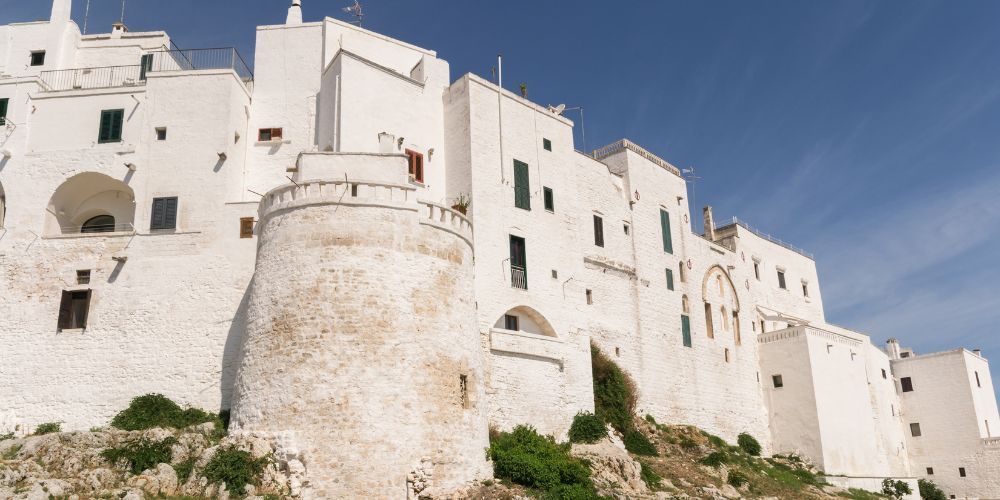
Perched on three hills and surrounded by ancient walls, the city of Ostuni is a maze of alleys that converge in the main square: a place out of time where you can get lost watching postcard views and details that tell a thousand-year history, stratified century after century.
The houses of the old town are illuminated by the light reflected on the whitewashed walls, a custom handed down for centuries to prevent the spread of epidemics and that now is an essential feature that identifies Ostuni as "the white city". Walking in the alleys is a continuous discovery: in the labyrinthine path between squares and staircases you will come across artisan shops, restaurants offering traditional dishes and glimpses of everyday life.
The oldest parts of the walls date back to the time of the Messapians, the people who occupied the lands of Salento in classical antiquity. What are now the most imposing and best preserved walls, were built by the Angevins from 1350 to defend the village from the incursions of the Saracens and pirates who ruled the Adriatic Sea.
In the following centuries they were enlarged and enriched with towers and ramparts until the eighteenth century: after the earthquake that hit the Salento in 1743 began a slow decline, interrupted only by the recent restorations of the 90s. Today you can walk along the walls enjoying the view of the countryside and olive groves that slope down to the sea.
Santa Maria Assunta in Cielo Cathedral and Diocesan Museum
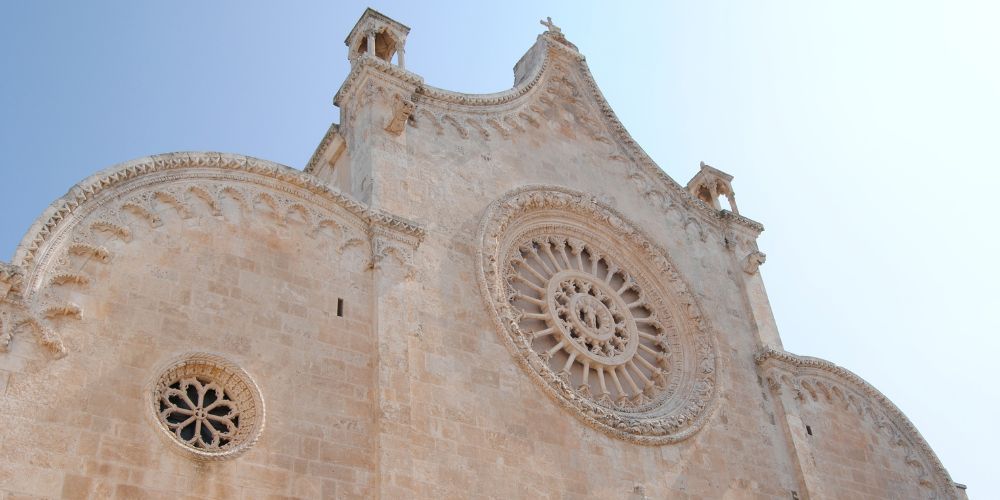
Nestled among period palaces stands the majestic Ostuni Cathedral, a masterpiece of late Gothic art that prefigures features of the Renaissance style: a national monument since 1902, dates back to the second half of 1400 and houses works of art of great value.
The elegant façade, entirely made of local stone, is adorned with three portals and a central rose window depicting Christ the Sun, a true masterpiece that stands out for the refinement of the sculptures that make it up. The Latin cross interior has been modified over the centuries, with a predominance of late Baroque characters.
Next to the Cathedral is the Palazzo dell'Episcopio, seat of the Bishop and Diocesan Museum of Ostuni. Opened in 2017, the museum exhibits works from the Capitolare Archaeological Collection, from local churches and monasteries. Among the most interesting works we find an anatomical Crucifix in wax of the eighteenth century, a statue of Our Lady of the Rosary of the seventeenth century, the Treasury of the Chapter consisting of vestments and silver sacred, some finds of the Messapian civilization, Byzantine icons, paintings and wooden sculptures of the Apulian masters.
The museum also offers the opportunity to visit the eighteenth-century roof garden, from which you can enjoy a beautiful view of the plain of the olive trees and the marina.
Piazza della Libertà
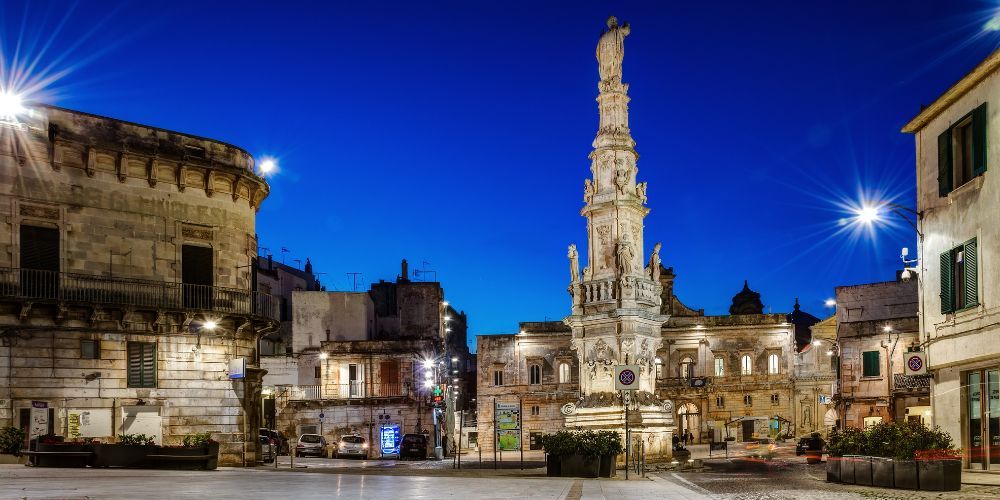
The beating heart of Ostuni and the ideal starting point to discover its wonders is certainly Piazza della Libertà, the nerve center of city life, surrounded by the most important historical buildings and monuments.
On the north side stands Palazzo San Francesco, an elegant building that was home to a Franciscan convent and now houses the Town Hall and the Municipal Library: the facade facing the square is neoclassical, while the rear is baroque.
On the south side stands the famous Obelisk of Sant'Oronzo, almost 21 meters high, erected as a sign of gratitude to the one who saved the city from the plague of 1657. The obelisk is surmounted by a gilded bronze statue of the patron saint, which dominates the square with the pastoral stick and episcopal vestments.
Piazza della Libertà is the ideal place to enjoy the atmosphere of Ostuni, among the colors and scents of fruit and vegetable stalls, artisan shops and typical products, cafes and restaurants where you can taste local specialties.
Church and Palazzo San Francesco
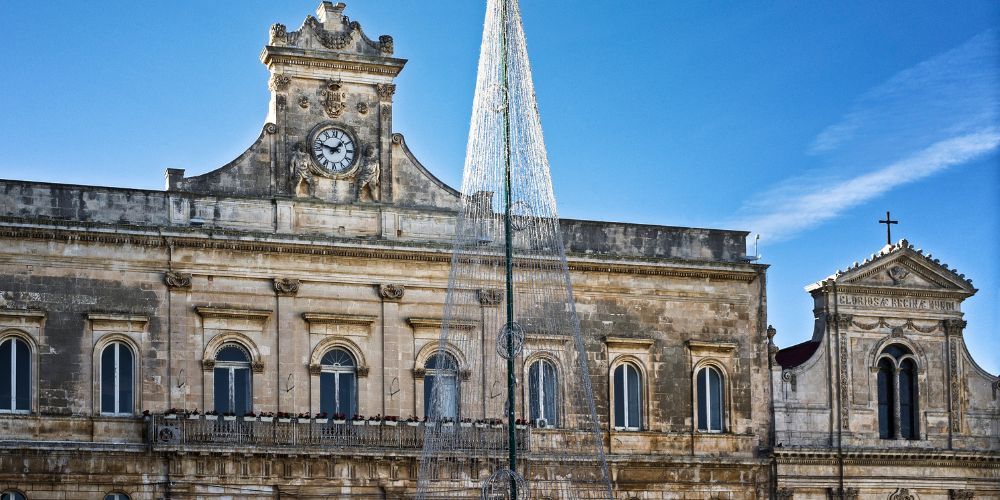
Ph Canva by graemenicholson
The Church and Palazzo San Francesco are two impressive buildings overlooking Piazza della Libertà in Ostuni. Built in 1304 by the friars on land a donated by the prince of Taranto, the church was originally in Gothic style: it was renovated several times in the following centuries, until it took on its present appearance in 1883, when the architect Gaetano Jurleo designed the neoclassical façade, in harmony with the Palazzo Civico.
The Church preserves inside works of art of great value, such as the eighteenth-century high altar in polychrome marble, the statue of the Dead Christ that until the 50s was carried in procession by the Brotherhood during Good Friday, a seventeenth-century wooden statue of Saint Augustine, the bronze door of the twentieth century, depicting scenes related to the life of Saint Francis and the city of Ostuni.
The Palazzo San Francesco was the seat of a Franciscan convent for over 500 years, from 1304 to 1809 and now houses the Town Hall and the Municipal Library. The Palace has an imposing façade, with a portal surmounted by a balcony and a clock. Inside you can admire the cloister and the frescoes of the Council Hall: often the palace hosts exhibitions of local artists and cultural events.
Ostuni Civic Museum
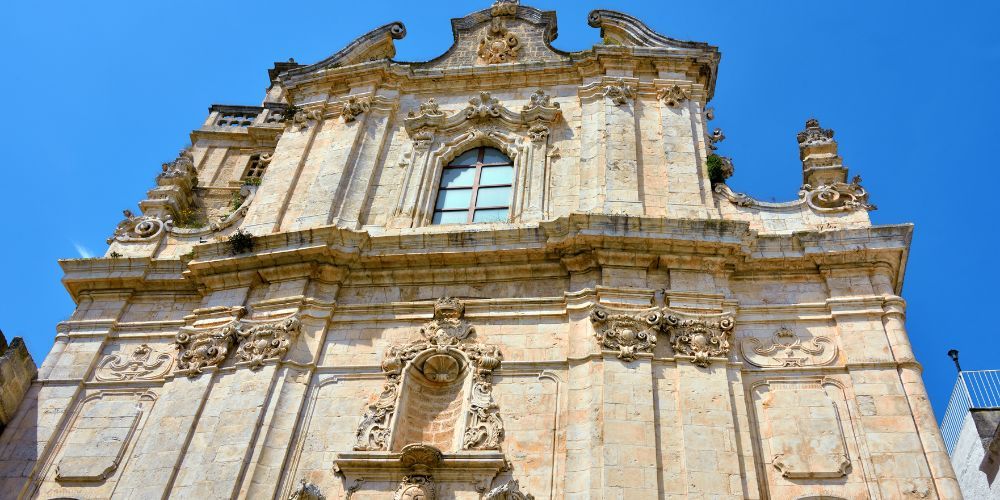
Continuing the journey back in time, in search of the traces left by the ancient civilizations that lived these lands, the next must is definitely the Civic Museum of Ostuni, located in the former convent of Santa Maria Maddalena dei Pazzi next to the Church of San Vito Martire.
The Museum houses finds from the southern Murgia that testify to the life and culture of the Preclassic populations, from the Paleolithic to the Middle Ages.
Among the most precious pieces, stands out the cast of the Woman of Ostuni, a pregnant woman buried with her fetus, dating from about 28,000 years ago. It is one of the oldest maternity finds in the world, revealing the importance of fertility worship in prehistoric times.
Other interesting finds are those related to the Messapian civilization, which flourished between the seventh and third centuries BC, such as grave goods, decorated ceramics and coins.
The museum also offers a section dedicated to the medieval and modern period, with objects from the Medieval Tower of Ostuni and the convent garden.
Sleeping in a Trullo when in Ostuni
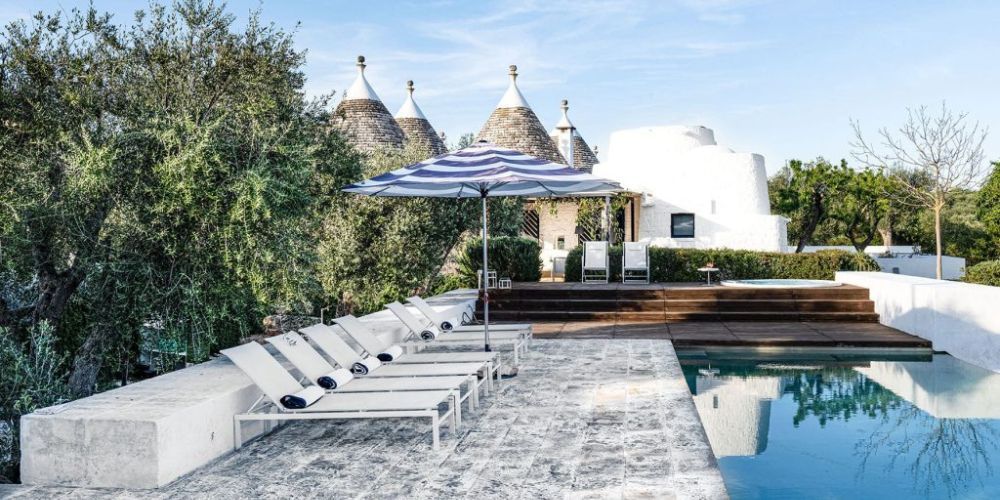
The Trulli, declared a UNESCO World Heritage Site in 1996, are a symbol of Apulian culture and tradition: formerly conceived as temporary shelters or permanent homes for farmers during the seasons of agricultural work in the countryside, are typical of central-southern Puglia, in particular Itria Valley.
Their plan is usually circular, composed of dry stone walls and conical roofs, at the top of which there is a pinnacle bearing symbols and geometric patterns of religious, esoteric or propitiatory significance. The thickness of the walls promotes an ideal temperature with all weather conditions, insulating from heat in summer and cold in winter.
In recent years these fascinating buildings have been subject to redevelopment and many have been transformed into prestigious residences. It ranges from the most simple and rustic trulli, to the most luxurious and equipped with every comfort, such as swimming pool, jacuzzi, wi-fi and air conditioning: places where the charm of the past is combined with the comforts of the present, for a total immersion in the unspoilt nature without sacrificing luxury.
At VisitItaly we chose Cocotrullo: a small group of trulli perched on a hill in the heart of the Itria Valley, a few kilometers from Ostuni and the enchanting beaches of the Adriatic Sea, surrounded by thick olive groves, prickly pear blades and long rows of vines.
In addition to the antique cones, which have been meticulously restored, new ones have been added: four bedrooms with private bathrooms, underfloor heating, TV and Wi-Fi. Outside there is a large infinity pool and a chromotherapy whirlpool, to spend days of relaxation and absolute quietness, away from the stress and noise of the city.
Discover CocotrulloAbout the author
Written on 30/10/2023



Sara Milanolo
A jewel set among valleys of olive groves, a few kilometers from the sea of Puglia: is the enchanting Ostuni, the white city of Itria Valley.